| Sporty/performance car; Built in USA |
|
|
| Good condition price range: $1,000 – $2,800* |
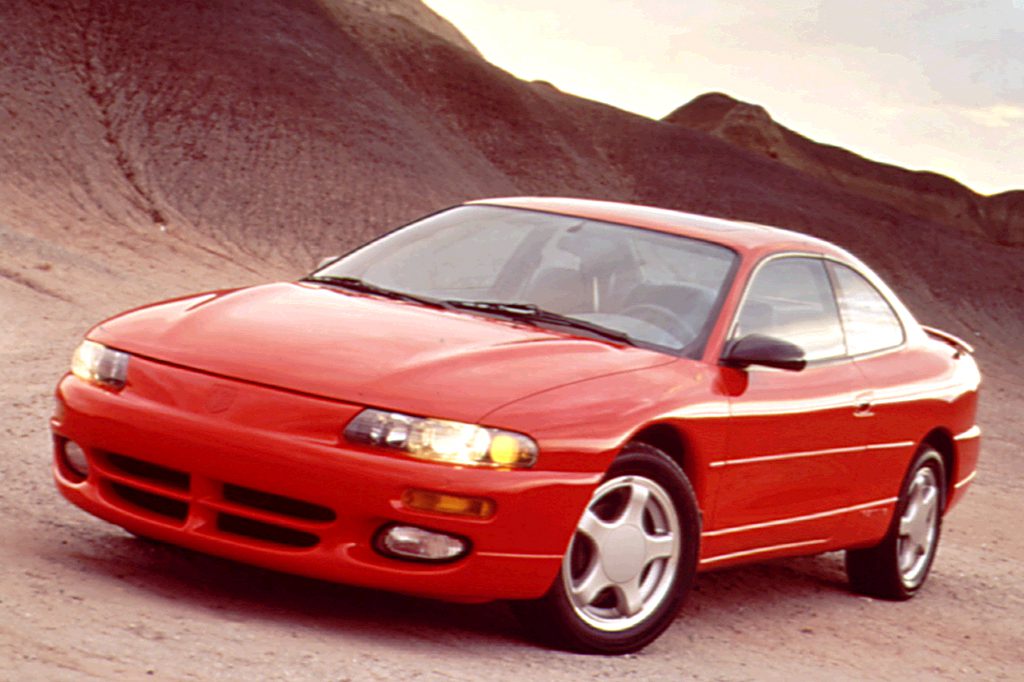
1995 Dodge Avenger ES
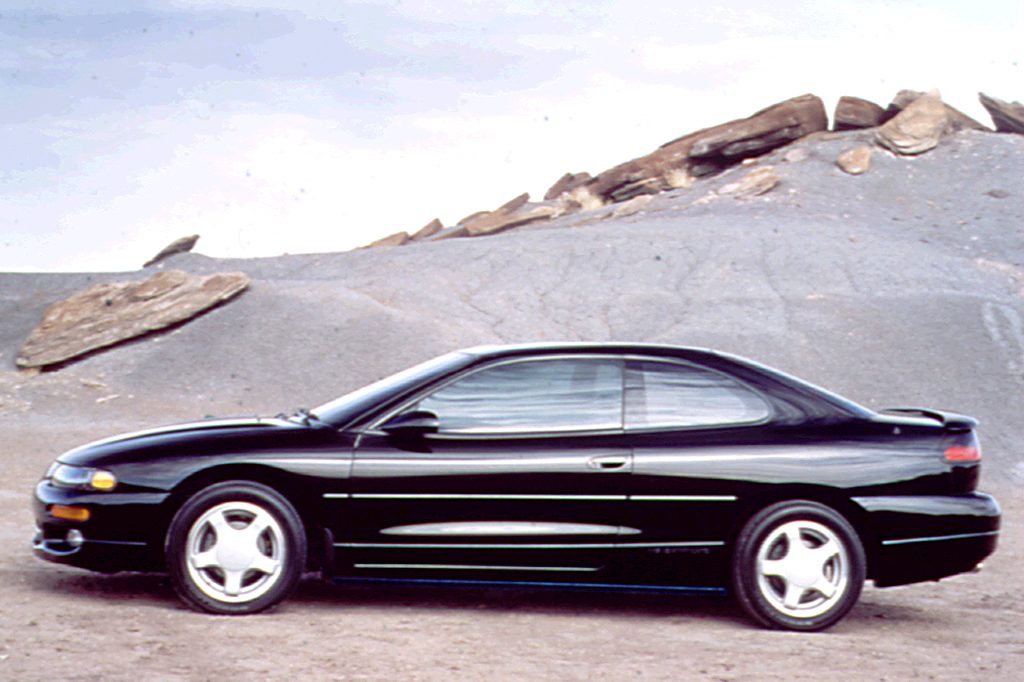
1995 Dodge Avenger ES
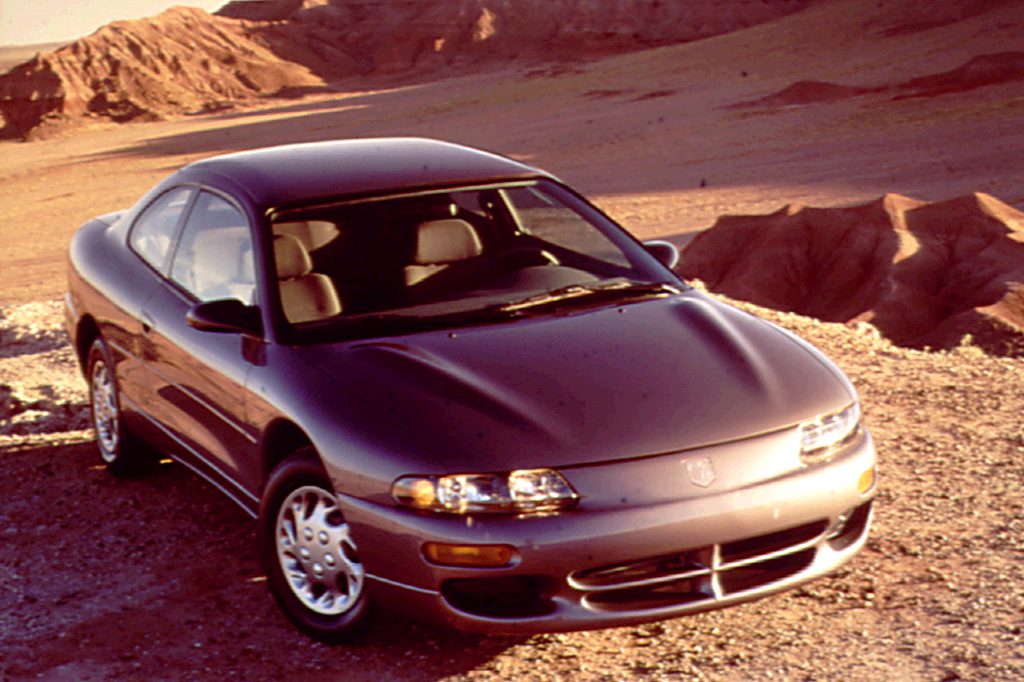
1996 Dodge Avenger
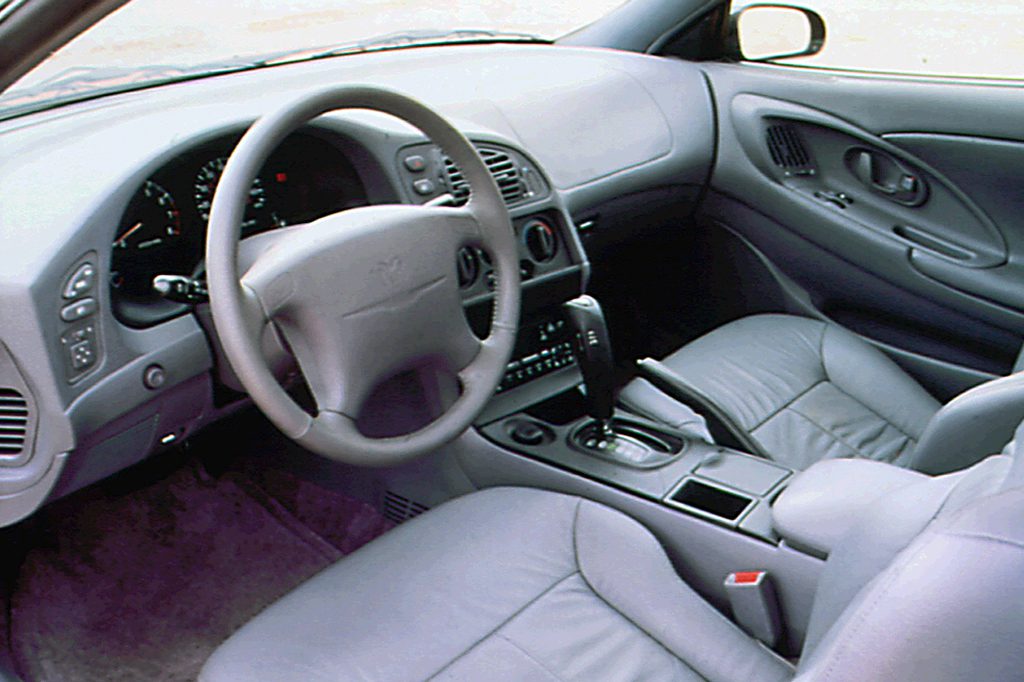
1996 Dodge Avenger interior
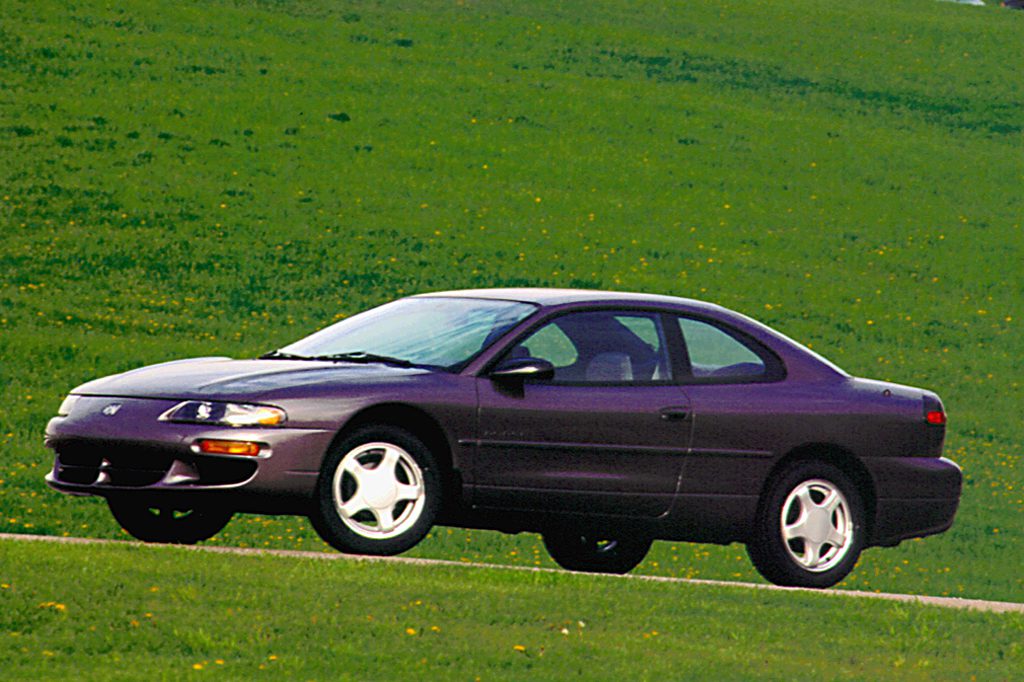
1997 Dodge Avenger ES
| Pros: |
|
| Cons: |
|
Attractively styled and capable on the road, the Avenger has a lot going for it: proven mechanical elements, reasonable prices, and wholly adequate room for four.
Overview
Both Avenger and its corporate cousin, the Chrysler Sebring, were designed by Chrysler but built by Mitsubishi in Illinois. They ride a modified Mitsubishi Galant platform. Sebrings and Avengers differ mainly in grille and taillights, but Dodge’s version had fewer standard features and a lower sticker price. Avengers came in base and ES models. The base had a 2.0-liter 4-cylinder engine with dual-overhead camshafts and 140 horsepower. A 5-speed manual transmission was standard and 4-speed automatic optional. The ES got a 2.5-liter single-camshaft V6 that came only with the automatic, but a 4-cylinder engine and manual shift were available as credit options. Antilock brakes were standard on the ES and optional on base Avengers. Dual airbags were standard on both.
Yearly Updates
| 1996 Avenger Changes were few for ’96. The ES coupe wore new seat fabrics, and the V6 engine gained eight horsepower this year. |
| 1997 Avenger New front and rear fascias gave the ’97 Avenger a revised look, but little else was new this year. Fog lamps were installed on the ES coupe. |
| 1998 Avenger A new Sport package was available on base models with the V6. It added a body-color rear spoiler and 16-inch wheels. Base models also got a rear sway bar. |
| 1999 Avenger Dodge shuffled some options around and, in midyear, deleted the 4-cylinder engine. Otherwise, Avenger was a virtual rerun. |
| 2000 Avenger Avengers gained a number of standard features that had previously been optional, including power windows and locks. Base models added cruise control, 4-wheel disc brakes, and 16-inch wheels (in place of 14s). ES coupes now came with standard leather upholstery and keyless remote entry, as well as a power driver’s seat. Chrysler planned to drop the Avenger name after the 2000 model year, replacing it with a new Stratus coupe. |
